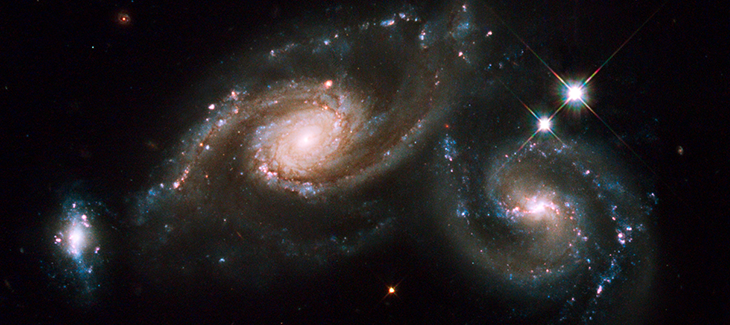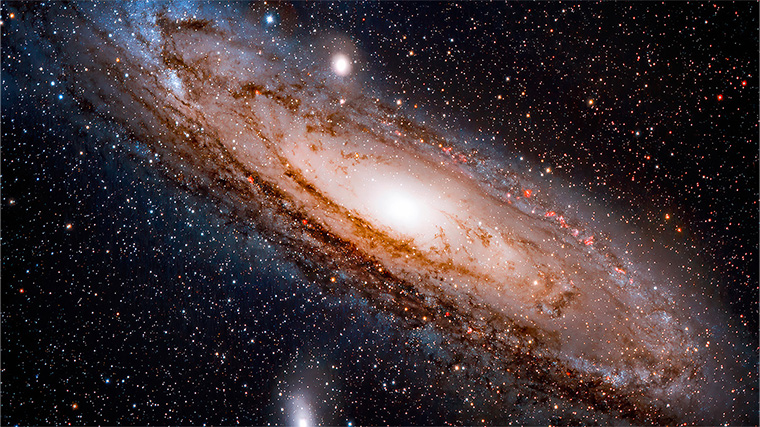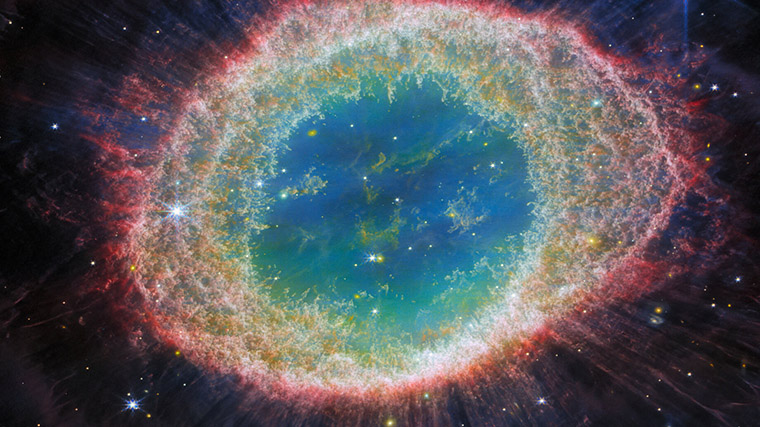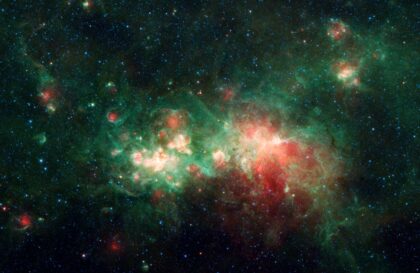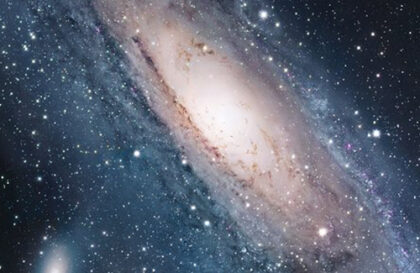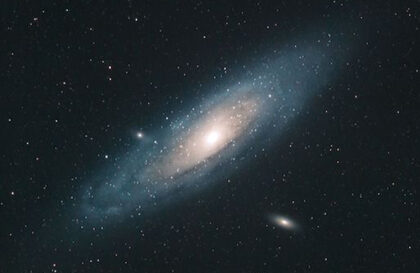In 2006, the Hubble Space Telescope captured a compelling cosmic scene: two galaxies in the constellation Pisces South, 100 million light-years from our planet, are being pulled apart by a third galaxy under the influence of their gravity.
Galactic collisions are not uncommon in outer space. A study published in early 2009 involving an analysis of 21,902 galaxies found that most galaxies have collided with other similar objects in their history.
Image credit: ESA/Hubble & NASA, W. Keel, Dark Energy Survey, Department of Energy, Fermilab, Dark Energy Survey Camera, (DECam), Cerro Tololo Inter-American Observatory, NoirLab/National Science Foundation/AURA, Sloan Digital Sky Survey; Acknowledgment: J. Schmidt
Galaxy Merger Mechanism
In galaxy mergers, although stars do not collide due to their vast distances apart, gravity and friction between gas and dust play a key role. The outcome of the merger depends on various factors, including the angle and speed of collision, as well as the size and composition of the galaxies involved. These mergers are crucial for understanding galaxy evolution. For instance, post-merger, stars “forget” their previous orbits and their motion becomes more chaotic, resulting in an elliptical galaxy.
During the merging process, the rate of star formation surges, reaching levels significantly higher than what is typical for individual galaxies. This could be thousands of solar masses per year, whereas, in the Milky Way, two stars are formed on average.
Molecular clouds in elliptical galaxies collide, facilitating the formation of new stars. After the merger, the star formation rate declines due to gas depletion, which is evident in modern elliptical galaxies with a minimal number of young stars. Consequently, after a major merger, gas, and dust in the galaxy are exhausted in a few billion years, and star formation ceases. The galaxy is left with only old stars: yellow and red dwarfs, red giants, and white dwarfs. These galaxies themselves have a more reddish hue and are indistinguishable from one another.
Credits: NASA, ESA, STScI and J. Blakeslee (Dominion Astrophysical Observatory).Public Domain
In contrast to the colorful and structured spiral galaxies, elliptical galaxies are less exciting shapes with a very fuzzy structure. The stars in these galaxies are usually older than their spiral counterparts. If you are interested in the M49 galaxy in the photo above, you can find about 6,000 globular star clusters in it. The Hubble telescope’s image of this galaxy is based on infrared data.
Merger Outcome
The outcome of galaxy mergers depends on the resources of the colliding participant galaxies.
Wet merger: A merger involving gas-rich (or blue) galaxies. Intense star formation occurs during the merger, disk galaxies transform into elliptical ones, and quasar-like activity emerges.
Dry merger: A merger involving gas-poor (or red) galaxies. During the merger, the rate of star formation changes minimally.
Damp merger: An intermediate type of merger between the aforementioned types, in which the amount of gas is sufficient for intense star formation but insufficient for the creation of globular clusters.
Mixed merger: A merger between a gas-rich and a gas-poor galaxy.
Antenna Galaxy Collision
Credit: ESA/Hubble & NASA
Galaxies NGC 4038 and NGC 4039, commonly known as the “Antennae,” are two spiral galaxies similar to the Milky Way. They are located in the constellation Corvus and are 65 million light-years away from us. For hundreds of millions of years, these galaxies have been undergoing the effects of a cosmic collision, which has resulted in millions of stars being ejected into space
A photograph taken by the Hubble telescope reveals massive pink gas clouds framed by the blue light of newly born stars, some of which are obscured by dense dust clouds.
As a result of the collision, gas from both galaxies accumulates in specific regions, facilitating a surge in star formation. This process will continue until the gas supplies are depleted. Ultimately, the cores of these galaxies will merge, forming a new massive elliptical galaxy.
Group galaxy battles
Four galaxies are tearing the fifth apart.
Credits: X-ray: NASA/CXC/CfA/E. O’Sullivan Optical: Canada-France-Hawaii-Telescope/Coelum
Stefan’s Quintet is a set of five galaxies in the constellation Pegasus. Of these, four are closely related to each other, while the fifth galaxy is not actually part of this group but only optically coincides with it. In this quintet, four galaxies actively interact with each other. During its observations, the Spitzer Space Telescope discovered an intergalactic shock wave of enormous size caused by the “fall” of one of the galaxies of this group towards another at a speed of millions of kilometers per hour.
What does a heavyweight battle look like?
Major merger: Two spiral galaxies of approximately equal size come together. During this process, they lose much of their gas and dust and often enter the active galactic nucleus phase, which is considered a prerequisite for the appearance of quasars. The result is an elliptical galaxy.
Credit: ESA/Hubble, CC BY 4.0
According to some studies, on average, large galaxies have experienced at least one such merger over the past 9 billion years. Smaller galaxies are more likely to become part of larger ones.
It also confirms the assumption that the Milky Way collided with another galaxy about two billion years ago.
Banner image: NASA, ESA, M. Livio and the Hubble Heritage Team (STScI/AURA)
Image credit:
https://hubblesite.org
https://www.nasa.gov
https://www.nasa.gov
https://www.esa.int
https://www.nasa.gov
https://www.esa.int
